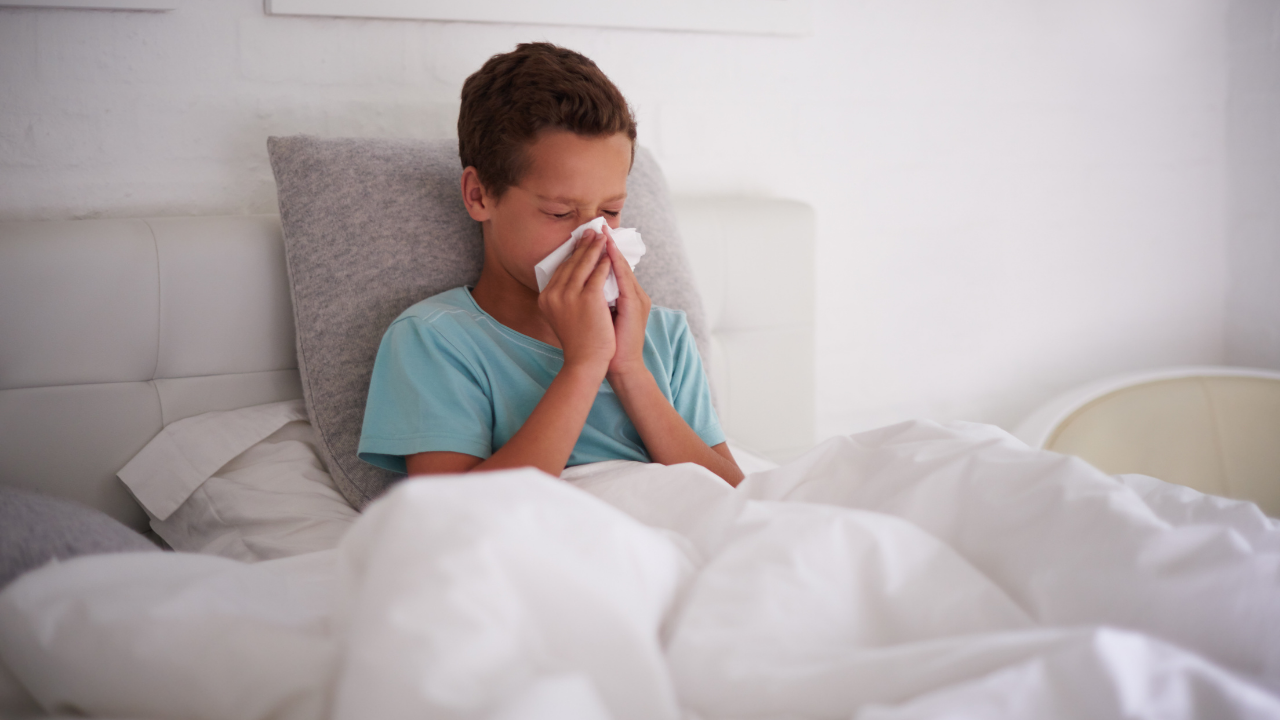Many parents ask our pediatricians about antibiotics when their kids are sick or exposed to a contagious illness. Certain infections require antibiotics, but the majority of cases (like viral infections) do not require antibiotics. In fact, with viral infections, antibiotics will not do anything to make a child feel better and can sometimes do more harm than good. Read this quick comprehensive guide about antibiotics with input from Blueberry pediatrician, Dr. Kristina Javier.
What are antibiotics, and how do they work?
Antibiotics are medications used to treat bacterial infections. They work by killing the bacteria or stopping their growth, allowing the body's immune system to fight the infection effectively.
What are antibiotics used for?
Antibiotics are used to treat bacterial infections. Bacterial infections are caused by harmful germs that enter the body and multiply, leading to various symptoms and illnesses. Common bacterial infections include strep throat, urinary tract infections, and certain skin infections. They can also cause more serious conditions such as pneumonia, meningitis, or sepsis if left untreated.
Bacterial infections are typically spread through contact with an infected person or contaminated objects and surfaces. Children are especially susceptible to infections (both viral and bacterial) because their immune systems are developing, they are learning hygiene practices (like hand washing), and they often put their hands and objects in their mouths.
How long do antibiotics take to work?
The time it takes for antibiotics to work may vary depending on factors like the type and severity of the infection and the specific antibiotic used. You should start noticing an improvement in your child's symptoms within 24-72 hours after starting treatment. Even if they start feeling better, it's important to complete the full course of antibiotics as prescribed by your child's doctor; this ensures the infection is completely eradicated and reduces the risk of it returning.
If your child is still experiencing symptoms or if they get worse after a few days of treatment, don't hesitate to reach out to your child's doctor for further evaluation and perhaps a change in medication.
Do antibiotics treat viral infections?
Antibiotics do not treat viral infections and should only be administered for bacterial infections diagnosed by your child’s pediatrician.
.png)
Types of infections
There are three major categories of infections: bacterial, viral, and fungal.
- Bacterial - common bacterial infections include strep throat and “staph” infections
- Viral - some viruses you may be familiar with are the common cold, COVID-19, and seasonal flu
- Fungal - infections caused by fungus often include a yeast diaper rash and ringworm
Antibiotics only help cure the first category, bacterial infections. When your child has a runny nose, cough, red eyes, and fever, it is most likely a viral infection, otherwise known as “a cold.”
Does mucus color determine if my child needs antibiotics?

A common misconception is that yellow or green mucus indicates a bacterial infection. Viruses commonly cause colored, thick mucus. Only time, hydration, and rest - not antibiotics - will help mucus and other symptoms caused by viruses go away.
What’s the risk of antibiotic use?
Antibiotics are considered safe when used correctly and for the right reasons.
Unfortunately, even if used correctly, side effects of antibiotics are common. And because of their side effects, pediatricians usually won't prescribe antibiotics unless they are sure they are required.
Side effects of antibiotics include:
- Stomach aches, nausea, and diarrhea due to the change in the flora (bacteria) of the GI tract.
- Rashes or allergic reactions. Five out of 100 children experience allergies due to antibiotics. Allergic reactions vary, but some of these can be serious and can cause a child to end up in the emergency room if life-threatening.
Additionally, overuse and misuse of antibiotics can cause the bacteria to change and adapt to the antibiotics, creating resistant strains that won’t be killed by the common antibiotics we use now, such as amoxicillin. When bacteria are resistant, they can more easily spread from person to person and are more challenging to cure, causing more dangerous infections.
How to administer antibiotics safely
Dr. Javier advises four ways to ensure safe antibiotic use in your household:
- Administer medicine just as prescribed
- Do not share medications with others or siblings
- Keep medications out of children’s reach or in a secure, locked place
- Dispose of or return any unused medications (no leftovers).
How long do antibiotics stay in my child’s system?
After your child stops taking antibiotics, they usually stay in their system for a little while— anywhere from a few hours to several days. The exact duration can vary depending on factors like the dosage of the antibiotic, as well as their age.
What are commonly prescribed antibiotics?

The antibiotics commonly prescribed to children for bacterial infections include:
- Amoxicillin - ear infections caused by bacteria, strep throat, pneumonia
- AugmentinES, Augmentin - ear infections caused by bacteria, strep throat, pneumonia
- Omnicef - ear infections caused by bacteria, pneumonia, strep throat, urinary tract infections
- Z-pack, Zithromax - pneumonia, ear infections caused by bacteria, strep throat
- Bactrim, Sulfatrim - urinary tract infections, ear infections caused by bacteria
- Keflex - skin infections, cellulitis, abscess
- Ofloxacin Eye Drop - pink eye caused by bacteria, ear infections caused by bacteria (kids with tympanostomy tubes)
- Ofloxacin Ear drops - swimmers ear, ear infections caused by bacteria (kids with tympanostomy tubes)
- Polytrim Eye Drop - pink eye caused by bacteria
- Erythromycin Eye Ointment - pink eye caused by bacteria
- Ciprodex ear drops - swimmer’s ear, ear infections caused by bacteria (kids with tympanostomy tubes)
Does Blueberry Pediatrics prescribe antibiotics?
Yes, when deemed medically necessary, Blueberry pediatricians can write prescriptions for antibiotics for infections and illnesses they diagnose.
If you suspect your child has a bacterial infection or have more antibiotic questions, you can chat with a board-certified pediatrician through Blueberry Pediatrics.
Blueberry offers on-demand virtual healthcare for kids ages 0-21, right from the comfort of home. Blueberry's pediatricians are available 24/7/365 through text, video, or call. We treat most childhood symptoms and illnesses; no question is too big or small.
The best part? An entire year of Blueberry membership costs less than the typical copay of a single urgent care visit, and one membership covers all children in your household! It's like a doctor's office in your house. Sign up here.
.png)








.svg)






.svg)
.svg)